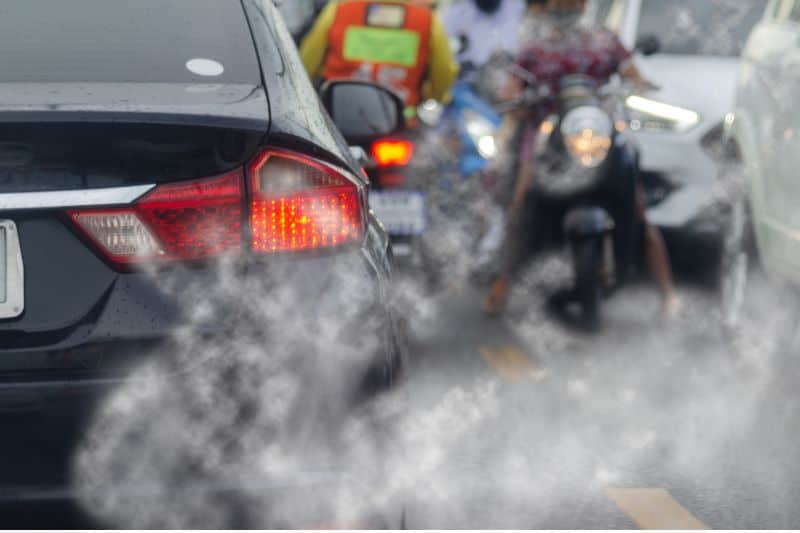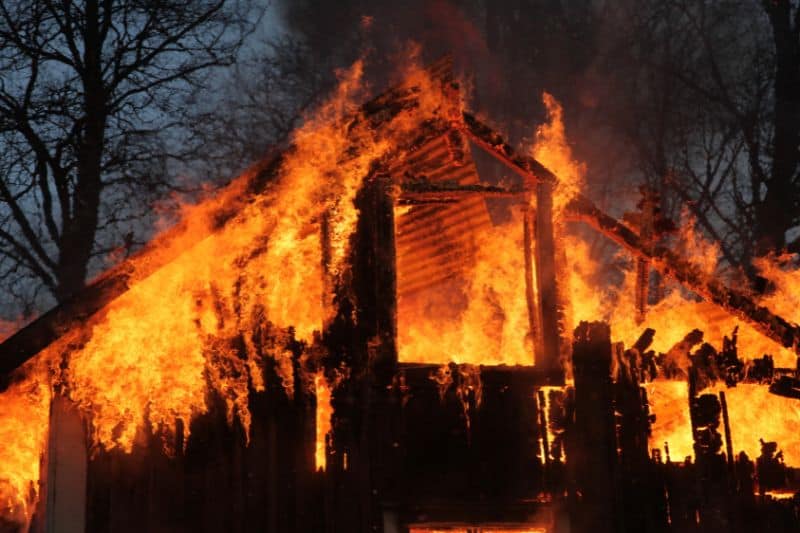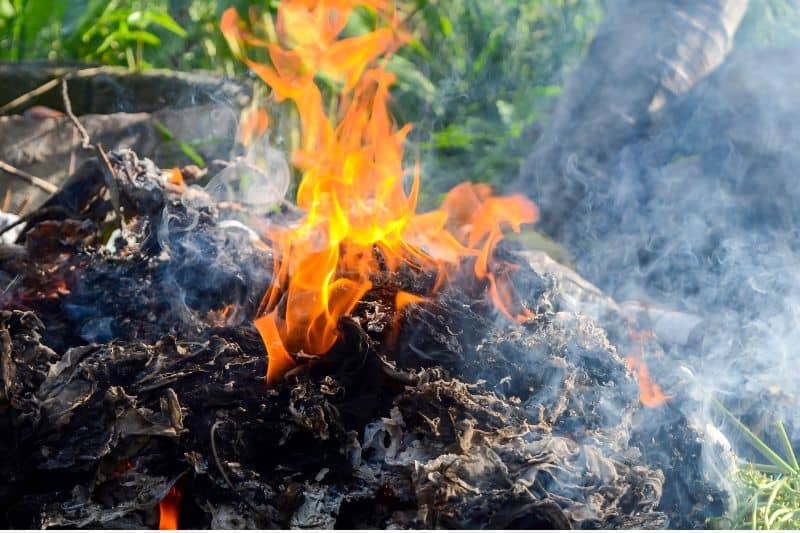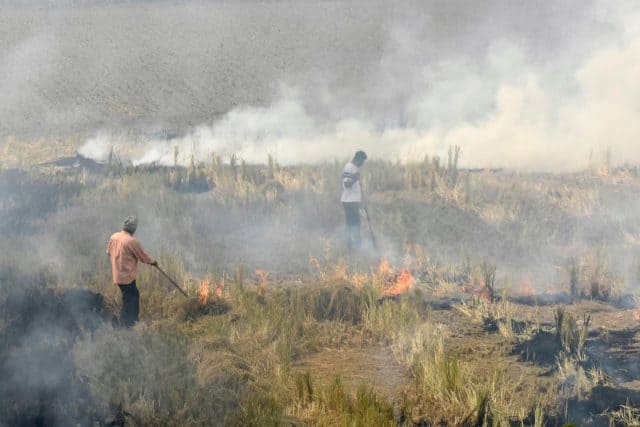Open burning is the burning of unwanted material in the open air, where smoke and toxic fumes are released into the atmosphere directly, affecting the environment.
Often, such practice is done outdoors, where household waste materials are burnt as a means of waste disposal, away from an incinerator or a furnace chamber. The lack of a chimney or stack predisposes the atmosphere to more air pollution from the activity.
The burnt material is released, unregulated, and in its raw form into the atmosphere. Materials such as plastics have some toxic chemicals that, once predisposed to the air, pose a danger to the environment and become a health concern for life.
This article will pinpoint the various implications of open burning on both the environment and human health and the various ways it can be stopped.
Causes of Open Burning
There are several reasons behind open burning.
Some of them are listed below:
- Open burning might be a part of a ritual in certain cultures and, sometimes, one that cannot be ignored.
- Open burning could also be done in order to reduce the amount of generated waste and to make waste disposal more compact.
- Campfires made for cooking on trips and hikes can also be added to the list of open burning.
- Sometimes, we might be lazy enough to go out and get rid of the waste.
- Lack of proper education regarding environmental degradation and the health hazards that are posed by open burning.
- Cheap means of waste disposal are sought for.
Effects of Open Burning on the Environment
Despite the cause of open burning of materials, the practice poses several detrimental effects on our environment. Let’s discuss a few in the section below:
1. Smoke Irritates the Environment
The release of uncontrolled smoke into the atmosphere pollutes the air, destroying the ozone layer.
In fact, the toxic fumes released by the process affect not only the ozone layer but also plant and animal life, negatively impacting wildlife and eventually declining their count.
Besides, the smoke emitted from open burning has an irritating odor that pollutes clean breathing air.
2. Adverse Climate Changes are Experienced
Burning biomass leads to the release of a thick black toxic smoke mostly composed of carbon. The large-scale production of soot leads to the absorption of sunlight and reduces the reflective nature of the environment. This reduces the sunlight reflected into the atmosphere, known as the Albedo effect, contributing to global warming.
3. Smoke Obscures Visibility

Unlike normal air, smoke is not clear, and it is dense. Consequently, it hinders movement from one place to another and can even lead to accidents on roads, which could have been avoided.
4. Burning Garbage Might Release Mercury that Can Eventually Leach into the Soil, the Air and Water
Depending on the composition of the burnt materials, waste burning may release mercury.
This element neutralizes useful soil media for crop production and prevents the prevalence of some key nutrients in the soil for plant use. Also, it kills fish, thus affecting the marine life ecosystem.
5. The Presence of Nitrogen Oxide is Activated and Increased in the Air
This is a toxic compound that combines with other pollutants in the air to reduce the oxygen circulation of the air, which instantly impacts plant and tree life. Moreover, it is also a cause of global warming, given that it is very volatile in the atmosphere.
It is released only in high temperatures of fire. Consequently, it causes an increase in atmospheric temperatures and poses a hazard to the ozone layer.
6. Open Burning of Tires Leads to The Emission of Dioxide and Furans
Dioxides and furans, harmful chemicals released directly into the air, pose a threat to ecosystems. Upon release, these pollutants settle on plants, which can have detrimental effects when consumed by animals or people.
Moreover, these substances exhibit corrosive properties, contributing to the erosion of the ozone layer and exacerbating global warming.
7. There is Always the Risk of the Fire Getting Out of Control

The fires may be started for open burning and soon become uncontrollable due to factors such as wind or the materials under combustion. This can lead to fire accidents or fire breakouts, causing deaths or the destruction of property.
8. It Facilitates the Production of Smog
In simple terms, smog is the result of the mixing of smoke and fog. This resultant material is more dangerous than either smoke or fog.
Smog causes severe visibility issues that contribute to devastating accidents. Not just that, added to these visibility issues is the fact that smog causes several health disorders. Above all, it suffocates people to the point that they might even die.
Smog is not just simple fog and smoke. With these is mixed suspended particulate matter (SPM) that contributes towards the breathing hazards posed by smog.
A thorough examination of the smog formation process reveals that volatile organic compounds (VOCs) released during open burning engage in photochemical reactions with sunlight. This interaction between VOCs and sunlight collectively contributes to the intricate process of smog formation.
It is, therefore, absolutely detrimental to the environment and its well-being. In fact, to a certain extent, smog is also responsible for global warming through the greenhouse effect.
9. Open Burning Adds Excess of Particulate Matter into the Atmosphere
Open burning is one curse of an activity. Besides all the problems that have been stated above, it causes another very significant problem. Open burning adds a lot of particulate matter or PM into the environment, which, in turn, contributes to the visibility troubles that already exist due to smoke, fog or even smog.
These particles pose a threat not only to our health but also to our belongings. Once these particles settle on surfaces such as cars, houses, lawn chairs, public transport, and others, they can introduce harmful and toxic chemicals like dioxins.
Over time, this contamination can lead to detrimental consequences, impacting both our well-being and the integrity of our possessions.
10. Open Burning Produces Harmful Ozone
The process of open burning produces a lot of CO or carbon monoxide. This gas, in itself, is very harmful and fatal. However, when released in the atmosphere, it reacts chemically with sunlight and thus produces free ozone in the atmosphere.
It is a known fact that the ozone layer in the stratosphere protects us from the sun’s harmful UV rays. However, free ozone is very harmful, and because of it, a locality might even lose its ‘clean air’ status.
Effects of Open Burning on the Human Health and the Environment
On the side of health, open burning also poses numerous effects. Let’s examine some of them:
1. Open Burning Can Lead to Breathing Difficulties
The burning of asbestos-containing materials, rubber products, and waste paints produces toxic fumes and odorous smoke into the atmosphere whose particles combine with the air, thus lodging deep in our lungs during inspiration, bringing about problems in breathing. With time, it can lead to diseases such as bronchitis, lung cancer, and asthma.
2. Eye Irritation

Once in contact with the eyes, smoke irritates, resulting in eye problems. In the same way, breathing is made difficult; the eyes are more susceptible to these harmful particles, given that eyes are external organs of the body.
3. Bioaccumulation and Toxicity in Humans
The release of dioxins from burning tires and rubber poses a great threat to man. They land on the plants eaten by animals and stored in their fatty tissue. These same animals are reared by human beings who end up ingesting the meat and products from these animals.
As a result, humans have the highest concentration of toxic substances in their bodies. This is because dioxins are bio-accumulative, meaning their concentration levels increase as you advance upwards in the food chain, with human beings at the top of that chain.
Once in the body, they alter the body’s normal functioning, cause cell division, affect the reproductive system, suppress the immune system and disrupt both the immune and the hormonal systems in the body, making the body susceptible to a myriad of health-related problems.
4. Poses a Threat to the Normal Functioning of the Liver, Brain, Kidney, Heart, and Lungs
Mercury is one of the toxic substances released into the environment during the open burning of certain industrial by-products, drugs, and chemicals. It is released in water, which subsequently drains into large water bodies. It is these same water sources such as rivers that communities use for their domestic purposes like drinking and cooking.
This leads to the breaking out of countless diseases that affect the brain, kidneys, heart, and lungs.
Furthermore, mercury has other adverse effects on water. It is ingested by fish that either die or become mercury carriers. Fish are a food source for most people, and ingesting these fishes means further ingesting the mercury.
5. Carcinogenic Elements
The ash residue left after the open burning is usually laden with many chemicals and metals, such as lead.
Lead can be leached in the soil when it rains or by the wind. Once in the soil, it can be absorbed by plants that are consumed either directly by man (vegetables) or by animals kept by man.
In the end, when a man consumes these vegetables or the meat from these animals, the lead levels in the body increase. Lead is known to be highly carcinogenic and causes cardiovascular diseases as well as kidney problems.
Incredible Solutions to Open Burning
Despite all the effects open burning causes on our environment and health, there are several steps that can be taken to address the problem. Here are some of them:
1. Being a Good Neighbor
It is always easy to embrace simple solutions, such as minding your neighbor. It is essential to check on various factors before engaging in open burning. If it is the only way for waste disposal (which usually won’t be the case), consider the time of day, the type of materials, and the proximity of the open space to others.
Burning waste at night can scare neighbors who might awake with the notion of fire in your house only to find you outside burning waste.
Also, ensure that you do the burning away from your neighbors if possible. The open ground away from the neighbors will reduce their proximity to the smoke or the chances of fire accidents.
2. Reduce, Reuse, Recycle
Most of the items taken out for open burning are often reusable. Materials made from plastic, paper, and glass can be used for other purposes in order to lengthen their useful life.
For items that cannot be used at home, they can be submitted to recycling plants for further processing. If one wants to start a minimalist life, one can give away junk to others or contact such services to aid others in need of those items and ultimately aid in saving the environment.
3. Free Local Landfill Garbage Collection Sites
In an effort to curb open burning, some states have opted for specific garbage collection sites where people have a waste container outside their houses where garbage collection companies, on specific days, collect the accumulated garbage and take it to the local landfill.
This eases the work of the state’s residents since it caters to the proper disposal of waste; thus, there is no need for open burning for individuals as a way of waste disposal.
4. The Implementation of Permit Issuance
This is the issuance of permits granting the authority to conduct the activity. As such, it can serve as a form of regulation by preventing people from open burning. The permit should have a high fee to dissuade applicants from seeking it, encouraging them to opt for other healthier waste disposal methods.
Nevertheless, if one has to acquire the permit, he or she has to convince the local authority that there is no other suitable alternative method for waste disposal except for open burning. The applicant has to submit the reason for the permit and then determine the location of the open ground for the procedure.
5. Public Awareness of the Health Impacts of Open Burning
Awareness should be made worldwide to sensitize people about the harmful effects of open burning.
The governments, as well as non-governmental organizations, should take up the responsibility to guide people on the various waste disposal methods and the different methods of classification of waste to avoid burning materials such as plastics, rubber, expired drugs, and industrial as well as chemical by-products.
6. Alternatives to Open Burning Should Be Introduced
One of the best ways to solve the open burning problem is to introduce alternatives to the public. The use of incinerators could be promoted. Making compost pits could be made more common. Alternative ways of cooking during a camp or a hike could be promoted.
References:
https://www.epd.gov.hk/epd/english/environmentinhk/air/guide_ref/guide_openburning.html









